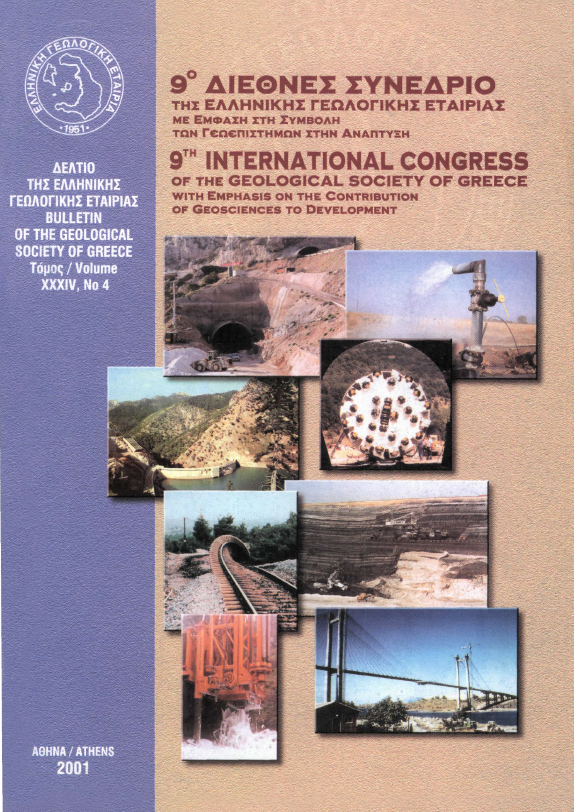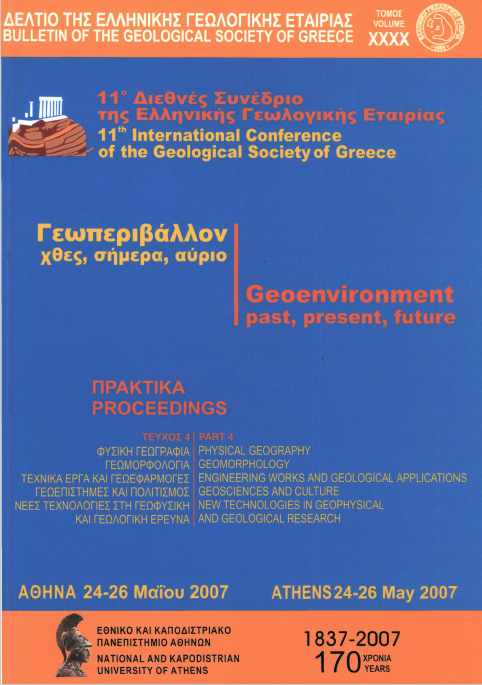Possible triggering of strong earthquakes in a seismic sequence due to Coulomb stress changes generated by the occurrence of previous strong shocks

Abstract
Coulomb stress changes (ACFF)were calculated assuming that earthquakes can be modelled as static dislocations in an elastic half-space, and taking into account the coseismic slip in strong earthquakes. The stress change calculations were performed for strike, dip, and rake appropriate to the strong events considered. We evaluate if these chosen earthquakes brought a given strong subsequent event closer to, or farther from, failure. It was found that each of the subsequent strong events occurred in regions of increased calculated Coulomb stress before their occurrence. Moreover, the majority of smaller aftershocks also were located in areas of positive ACFF. This indicates the probable triggering of the latter events, the foci of which are situated at nearby faults or fault segments.
Article Details
- How to Cite
-
PAPADIMITRIOU, E. E., KARAKOSTAS, V. G., & BABA, A. B. (2001). Possible triggering of strong earthquakes in a seismic sequence due to Coulomb stress changes generated by the occurrence of previous strong shocks. Bulletin of the Geological Society of Greece, 34(4), 1539–1546. https://doi.org/10.12681/bgsg.17260
- Section
- Seismology

This work is licensed under a Creative Commons Attribution-NonCommercial 4.0 International License.
Authors who publish with this journal agree to the following terms:
Authors retain copyright and grant the journal right of first publication with the work simultaneously licensed under a Creative Commons Attribution Non-Commercial License that allows others to share the work with an acknowledgement of the work's authorship and initial publication in this journal.
Authors are able to enter into separate, additional contractual arrangements for the non-exclusive distribution of the journal's published version of the work (e.g. post it to an institutional repository or publish it in a book), with an acknowledgement of its initial publication in this journal. Authors are permitted and encouraged to post their work online (preferably in institutional repositories or on their website) prior to and during the submission process, as it can lead to productive exchanges, as well as earlier and greater citation of published work.







